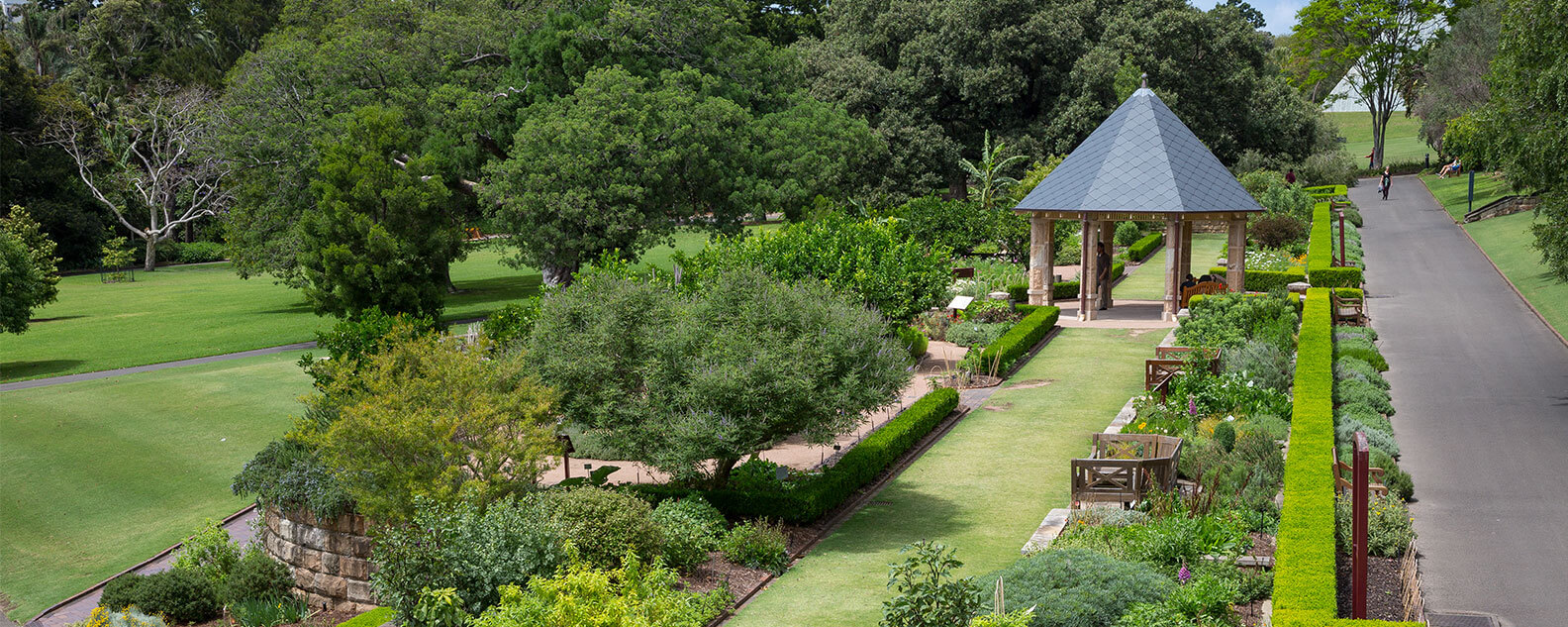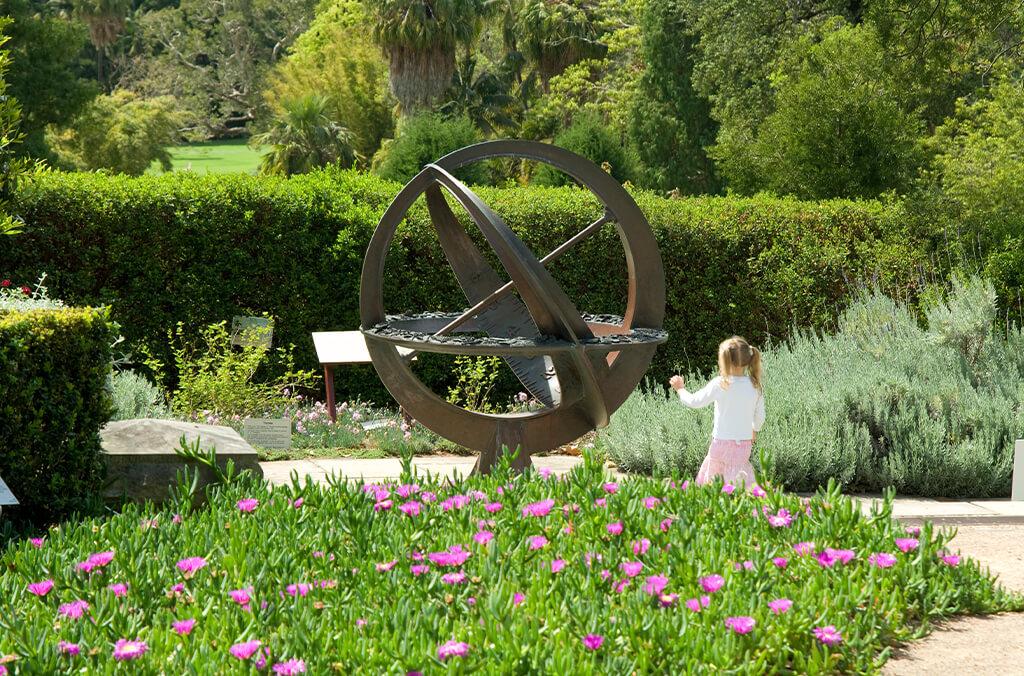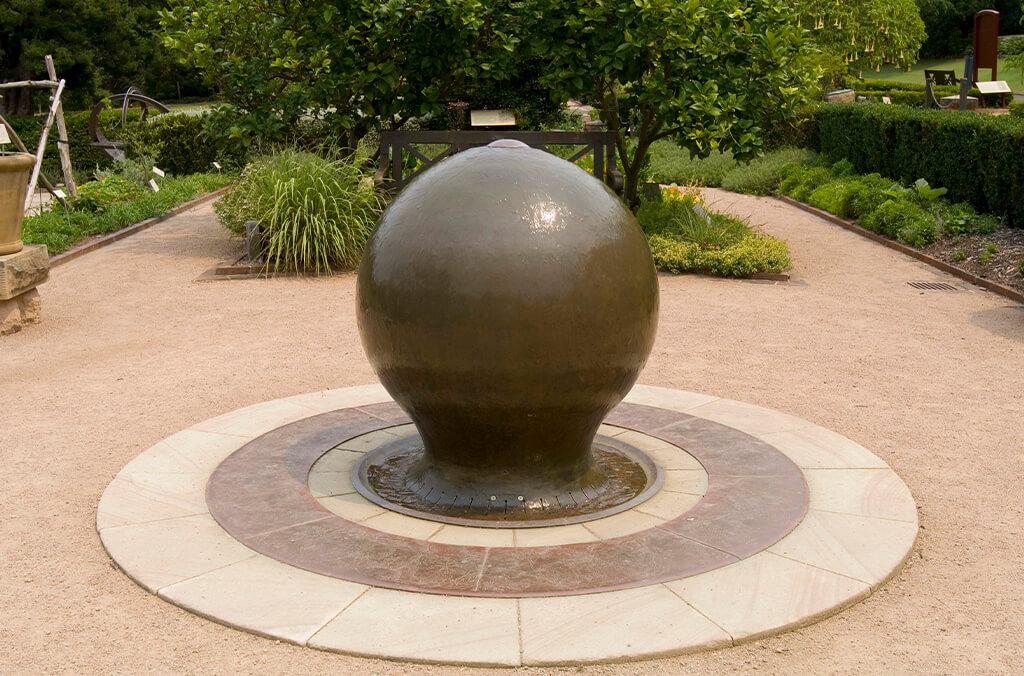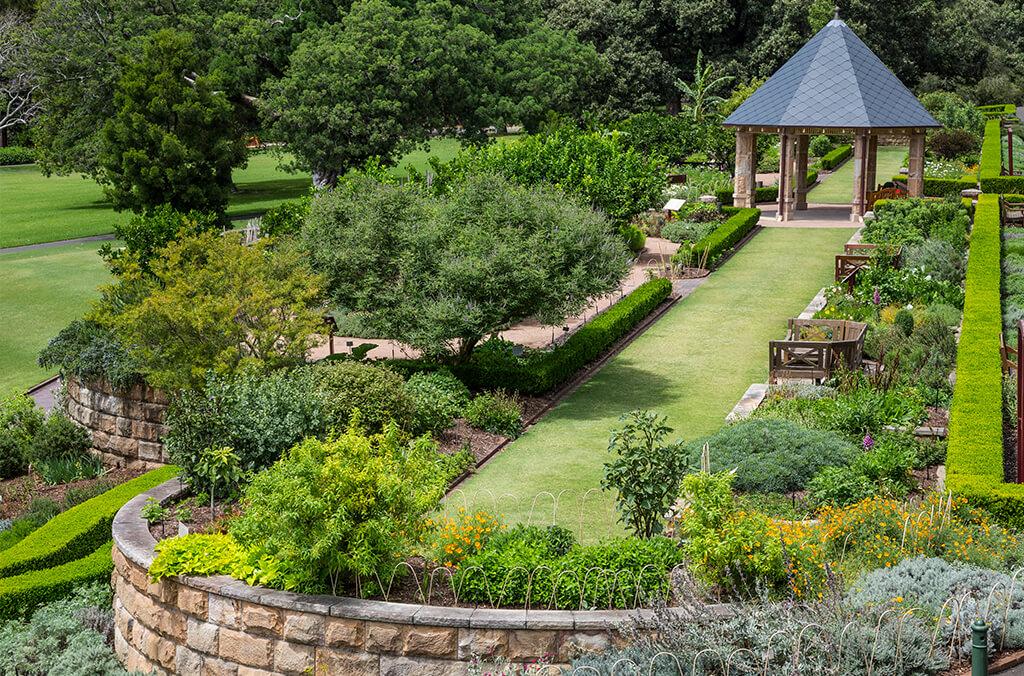Herb Garden
Enjoy the stories, scents and colours of the herbs used by the people of many cultures who have made Australia their home.

The Herb Garden reflects the changing nature of our society and tells the stories of the history and traditions of the use of herbs as food, medicine and dyestuffs.
Discover the most colourful plants in the Garden.
Prior to the discovery of aniline dyes by William Henry Perkin in the 1850s, textiles were coloured using animal, mineral or plant dyestuffs. The most highly prized and commonly used plant-derived colours were indigo (Indigofera tinctoria), yellow (Crocus sativus – saffron) and red (Rubia tinctorum – madder). The onset of the Industrial Revolution saw the popularity of large scale extraction of colour from plant-derived dyes wane and the first casualty of mass production was madder red.
Learn about Roman 'bush' foods.
Many of the culinary herbs commonly used in European cuisine today were handed down to us by the Romans, who took their herbs with them as they built their empire. Whenever you add a bay leaf, mustard seeds or a sprig of rosemary to your cooking, you're continuing a tradition spanning more than a thousand years.
Take a walk around the garden to learn more about the ways that different cultures use herbs or simply surrender to the sights and smells while you relax in the sandstone pavilion. Our Sensory Fountain will delight children of all ages and the Armillary Sphere Sundial modeled on the Celestial Sphere offers an insight into the history of the telling of time.
If you're feeling inspired and want to plan your own herb garden design, visit gardening at home.

Take a walk around the garden to learn more about the ways that different cultures use herbs or simply surrender to the sights and smells.


